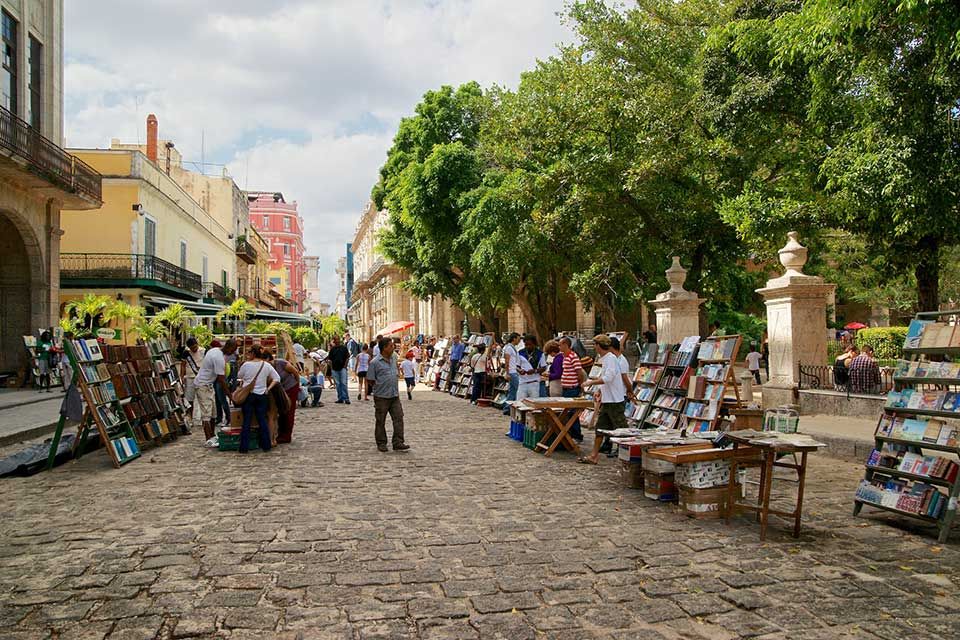Although Cuba stands out as one of the most prominent islands in the Caribbean, it is unlike many of its neighbors. While its tumultuous history is full of adversity and suffering, it is actually the blessing that has made Cuba such an individualistic nation. When the communist regime took over in 1959, they hit the pause button. Over the years, deterioration that comes with neglect has claimed some of the most beautiful buildings and monuments, but Cuba’s rich history, particularly that of Old Havana, has endured; the nation has proved its longevity by taking hardships in stride.
While most Caribbean islands fell under French or British rule at one point or another, Cuba remained a part of the Spanish empire from the time Christopher Columbus landed there. Unlike its neighbors, Cuba’s wealth didn’t come from coffee or sugar plantations – it found success as a stopping point for Spanish ships before they returned to their home ports full of treasure and goods. It was also the location where many ships were built and repaired. After a series of attacks by the British and French who sought to control this valuable refuge, the city was heavily fortified. Within the natural boundary of those fortress walls sits Old Havana, frozen in time. It would take close to a week to really enjoy everything Old Havana has to offer, but if you only have one day, here are some highlights not to be missed.
Start your day at Plaza Vieja. The 16th century city square has been home to markets, military exercises and is now a popular meeting place. It is a landmark that is not only representative of Havana’s history, but the resilience of its people. During the revolution, it became a concrete parking lot, but the people of Havana rallied the government and gained the needed support to restore it to its original glory. A variety of buildings that range in architecture from Art Nouveau to Cuban Baroque are now home to art galleries, photo exhibits and small museums, including one about the history of card games. And set in the center of the square is a reproduction of the original fountain built by Giorgio Massari. But the main reasons Plaza Vieja is not to be missed – particularly in the morning – is the 18th century Casa del Conde Jaruco filled with beautiful arched stain glass windows. A nearby tower is home to one of only 74 Camera Obscura in the world. Set at 115 feet in the air, the 360-degree views of the city are stunning.
Plaza de Armas could easily take an entire day to fully enjoy. It’s the main tourist square for good reason as it’s the site where Havana was founded. Since the 1500’s citizens of Cuba have been meeting in the courtyard to listen to music, escape the heat beneath royal palms and enjoy the cultural exchange. The city museum, Museo de la Cuidad has found its home here, amidst shady gardens and cafés. A robust second-hand book fair sets up every day except Sundays. If you’re interested in Cuba’s history, you will find nearly every book that has ever been published on the subject.

After a quick stop at the impressive façade of the Cathedral de San Cristobal, with its two large bell towers and vaulted ceilings that date back to 1777, and perhaps a rest at one of the cafés, it’s time to let Hemingway be your guide. Cuba was home to the famous American author for seven years, and was the place where he wrote some of his most notable novels, including The Old Man and the Sea, A Moveable Feast, and Islands in the Stream. He frequented several places, but a few stood out as his favorite. The restaurant La Bodeguita del Medio, which was founded in 1942 is still serving remarkable seafood dishes. Nearly every celebrity to visit the island has eaten there and it’s a great spot to hear live Cuban music. Along Calle Obispo, a narrow road off the beaten path, is where you can find El Floridita, Hemingway’s other favorite restaurant, and Hotel Ambos Mundos, where the writer resided for his entire stay in Cuba. The street comes to life at night with dancing, music, drinking, and card playing. All in the old style of Old Havana.
PS. This blog post is the first one after we have been listed among top 30 Caribbean blogs by Feedspot, which makes us very happy :-). Thank you for your support and do come back often for some great stories about the Caribbean!

